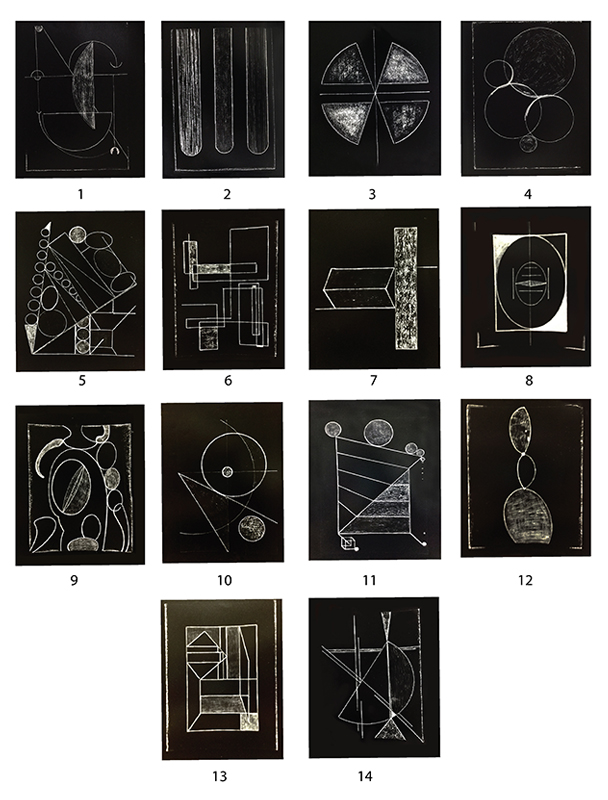
Single prints as well as the entire installation can be purchased on our secure on line store: www.hsgonlinestor.com
Statement:
Perhaps nowhere in nature is the beauty of its underlying geometric forms more evident than in snowflakes. Each snowflake is a singular manifestation of the glory of the myriad geometric shapes and patterns in the natural world.
For the past year, I have been creating unique camera-less geometric abstractions in the darkroom. The images in this exhibition do not attempt to replicate the geometry of snowflakes. They are creations of my own imagination. But I hope as you stand among them, they will
evoke a sense of snowfall and welcome you to the coming winter season.
Here are a few facts about snowflakes I borrowed from the Philadelphia Tribune:
Snow crystals form in clouds when the temperature is below freezing. They are created by water droplets freezing on small ice particles. As an ice crystal drops through the cloud it bumps and knocks others and becomes a snowflake. This process of bumping others, along with a little melting and re-freezing, aids the creation of their complex design. The air the snowflake drops through has to be under freezing otherwise the snowflake will simply melt and turn into rain.
Snowflakes always have six sides, and like human fingerprints, it is believed no two are exactly the same. Both the form and shape of a snowflake depend on the temperature and moisture content of the cloud. Snowflakes can be categorized as: plate (flat), column, star, or dendrite (lacy, needle and capped column).
When it is extremely cold the snow is very fine and powdery and snowflakes become quite simple in design, usually needle or rod shaped. When the temperature is near freezing (0 degrees Celsius) snowflakes become much larger and a lot more complex in design, for example, a star.
Though they look like simple pieces of frozen water falling from the sky, snowflakes, like people, are all different. They have similar characteristics but are different in appearance and are affected by temperature and location.
The worlds largest ever snowflake found to date was 38 centimeters wide and 20 centimeters thick.
This snowflake occurred at Fort Keogh, Mont., on Jan. 28, 1887.

